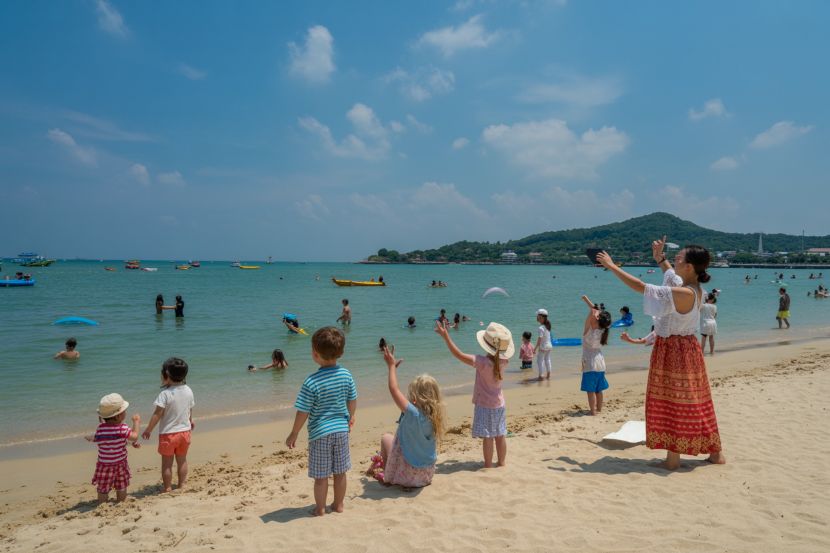Burlington beaches close due to wastewater treatment plant leak – WCAX

Incident Report: Wastewater Discharge and Public Health Advisory in Burlington
Overview of Environmental and Public Health Incident
Emergency maintenance at the main wastewater treatment plant in Burlington, Vermont, has resulted in the discharge of effluent that does not meet statutory permit requirements for bacteria elimination. Beginning Monday evening, this operational failure led to the release of undertreated wastewater, including solids and sludge, into the adjacent lake, posing a significant environmental and public health risk.
Implications for Sustainable Development Goals (SDGs)
This incident highlights critical challenges in achieving several United Nations Sustainable Development Goals (SDGs) at the municipal level.
- SDG 6: Clean Water and Sanitation: The event represents a direct setback to Target 6.3, which aims to improve water quality by reducing pollution and minimizing the release of hazardous materials. The failure of the sanitation infrastructure to adequately treat wastewater compromises the safety and quality of a major public water body.
- SDG 3: Good Health and Well-being: The potential for E.coli contamination in public swimming areas poses a direct threat to community health, conflicting with Target 3.9, which seeks to substantially reduce illnesses from water pollution. The subsequent beach closures are a necessary public health measure to prevent waterborne diseases.
- SDG 11: Sustainable Cities and Communities: The incident underscores the importance of resilient and reliable urban infrastructure (Target 11.6) for maintaining environmental quality. The closure of public recreational areas also impacts Target 11.7, which focuses on providing universal access to safe, inclusive, and accessible green and public spaces.
- SDG 14: Life Below Water: The discharge of pollutants from a land-based source directly harms the local aquatic ecosystem, running counter to the principles of Target 14.1, which calls for the prevention and significant reduction of marine and freshwater pollution.
Public Advisory and Affected Areas
In response to the health risks, a public advisory has been issued, and several public access points and beaches have been closed. The public is instructed to avoid entering the water at these locations until further notice. The affected areas include:
- Blanchard Beach
- Oakledge Cove
- The Blodgett Access Area
- The Coast Guard ramp
- Perkins Pier
Remediation and Monitoring Protocol
The closed areas will be reopened to the public only after water quality testing demonstrates that E.coli levels have returned to an acceptable and safe limit. This monitoring protocol is essential for safeguarding public health and restoring confidence in the environmental stewardship of the lake, in line with the objectives of SDG 3 and SDG 6. The testing and remediation process is anticipated to take approximately two days. Official signage will be posted to communicate the status of the closures.
Analysis of Sustainable Development Goals (SDGs) in the Article
1. Which SDGs are addressed or connected to the issues highlighted in the article?
-
SDG 6: Clean Water and Sanitation
This is the most directly relevant SDG. The article focuses on a failure at a “main wastewater treatment plant,” leading to the discharge of “solids, sludge, and dirty water” into a lake. This directly pertains to water quality and sanitation infrastructure.
-
SDG 3: Good Health and Well-being
The closure of beaches is a public health measure to prevent human contact with contaminated water. The article mentions that the discharge did not meet “bacteria killing permit requirements” and that beaches will reopen only when “E.coli tests show an acceptable limit,” highlighting the direct risk to human health from waterborne pathogens.
-
SDG 11: Sustainable Cities and Communities
The incident involves the failure of critical urban infrastructure (“Burlington’s main wastewater treatment plant”) and its impact on the community. It affects public spaces (beaches) and the overall environmental quality within the city of Burlington, relating to the goal of making cities safe, resilient, and sustainable.
-
SDG 14: Life Below Water
The discharge of undertreated wastewater pollutes the lake, a freshwater ecosystem. This pollution, containing solids, sludge, and bacteria, directly harms aquatic life and degrades the water body’s health, connecting to the goal of reducing pollution in marine and freshwater environments.
2. What specific targets under those SDGs can be identified based on the article’s content?
-
Target 6.3: By 2030, improve water quality by reducing pollution, eliminating dumping and minimizing release of hazardous chemicals and materials, halving the proportion of untreated wastewater and substantially increasing recycling and safe reuse globally.
The article describes a direct failure to meet this target. The “discharge entering the lake not meeting bacteria killing permit requirements” is a clear example of water pollution from a lack of adequate wastewater treatment.
-
Target 3.9: By 2030, substantially reduce the number of deaths and illnesses from hazardous chemicals and air, water and soil pollution and contamination.
The presence of E.coli above acceptable limits poses a direct threat of illness from water contamination. The closure of beaches is a preventative action to avoid the negative health outcomes this target aims to reduce.
-
Target 11.6: By 2030, reduce the adverse per capita environmental impact of cities, including by paying special attention to air quality and municipal and other waste management.
The failure of the “main wastewater treatment plant” represents a breakdown in municipal waste management, leading to a significant adverse environmental impact on the local lake ecosystem and recreational areas.
-
Target 14.1: By 2030, prevent and significantly reduce marine pollution of all kinds, in particular from land-based activities, including marine debris and nutrient pollution.
The discharge of “solids, sludge, and dirty water” from the land-based wastewater plant is a direct source of pollution for the lake, aligning with the type of pollution this target seeks to prevent.
3. Are there any indicators mentioned or implied in the article that can be used to measure progress towards the identified targets?
-
Indicator Mentioned: Level of Water Stress (E.coli levels)
The article explicitly states that the beaches will reopen once “E.coli tests show an acceptable limit.” The measurement of E.coli is a direct indicator of fecal contamination and water quality, used to assess the safety of water for recreational and other uses. This serves as a direct measure for Target 6.3 and Target 3.9.
-
Indicator Implied: Proportion of wastewater safely treated
The entire incident is about the failure to properly treat wastewater. The fact that the discharge did not meet “permit requirements” implies that a certain proportion of the city’s wastewater was not safely treated during the emergency maintenance. This is the primary indicator for Target 6.3.
-
Indicator Implied: Number of beach closure days due to pollution
The closure of “Blanchard Beach, Oakledge Cove, the Blodgett Access Area, the Coast Guard ramp, and Perkins Pier” for approximately two days is a quantifiable impact. Tracking the frequency and duration of such closures serves as an indicator of the environmental health of a city (Target 11.6) and the quality of its adjacent water bodies (Target 14.1).
4. Table of SDGs, Targets, and Indicators
| SDGs | Targets | Indicators Identified in Article |
|---|---|---|
| SDG 6: Clean Water and Sanitation | 6.3: Improve water quality by reducing pollution and minimizing the release of untreated wastewater. | Proportion of wastewater safely treated (implied by the failure to meet permit requirements). |
| SDG 3: Good Health and Well-being | 3.9: Reduce illnesses from water pollution and contamination. | E.coli test results to determine if water is within an “acceptable limit” for human contact. |
| SDG 11: Sustainable Cities and Communities | 11.6: Reduce the adverse per capita environmental impact of cities, focusing on municipal waste management. | Number of beach closure days due to infrastructure failure and pollution. |
| SDG 14: Life Below Water | 14.1: Prevent and significantly reduce marine pollution from land-based activities. | Discharge of “solids, sludge, and dirty water” from a land-based wastewater plant into the lake. |
Source: wcax.com

What is Your Reaction?
 Like
0
Like
0
 Dislike
0
Dislike
0
 Love
0
Love
0
 Funny
0
Funny
0
 Angry
0
Angry
0
 Sad
0
Sad
0
 Wow
0
Wow
0





































![Lancaster homeowner’s energy-efficient renovation sparks clash over historic preservation [Lancaster Watchdog] – LancasterOnline](https://bloximages.newyork1.vip.townnews.com/lancasteronline.com/content/tncms/assets/v3/editorial/9/ed/9ed03d32-c902-44d2-a461-78ad888eec38/69050b156baeb.image.png?resize=150,75#)
































.webp?#)







